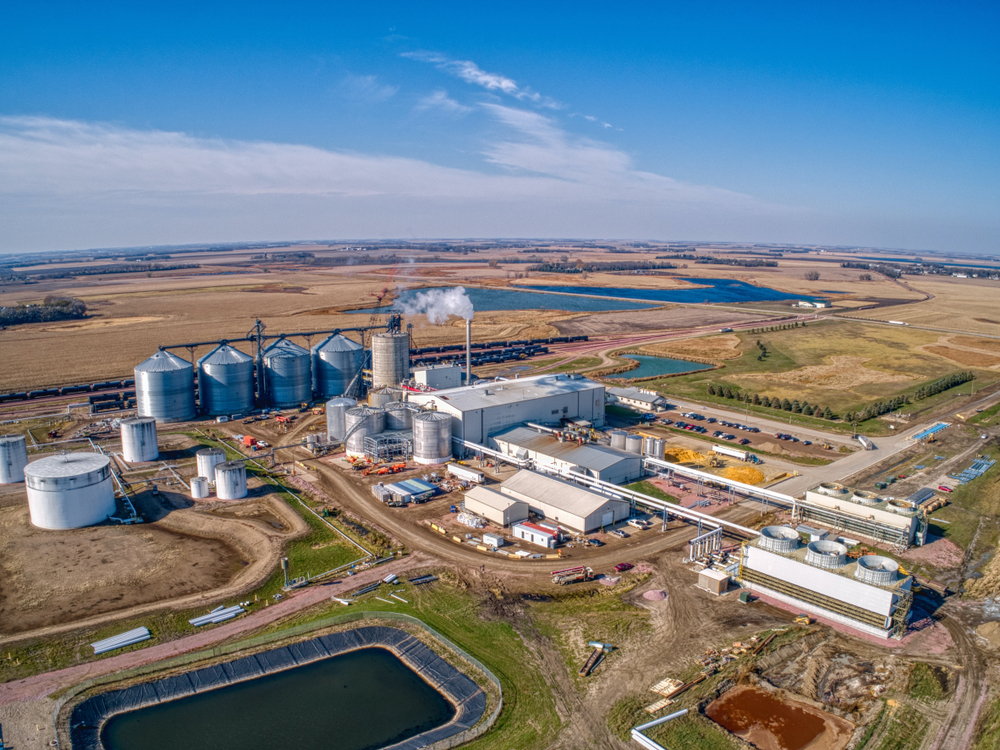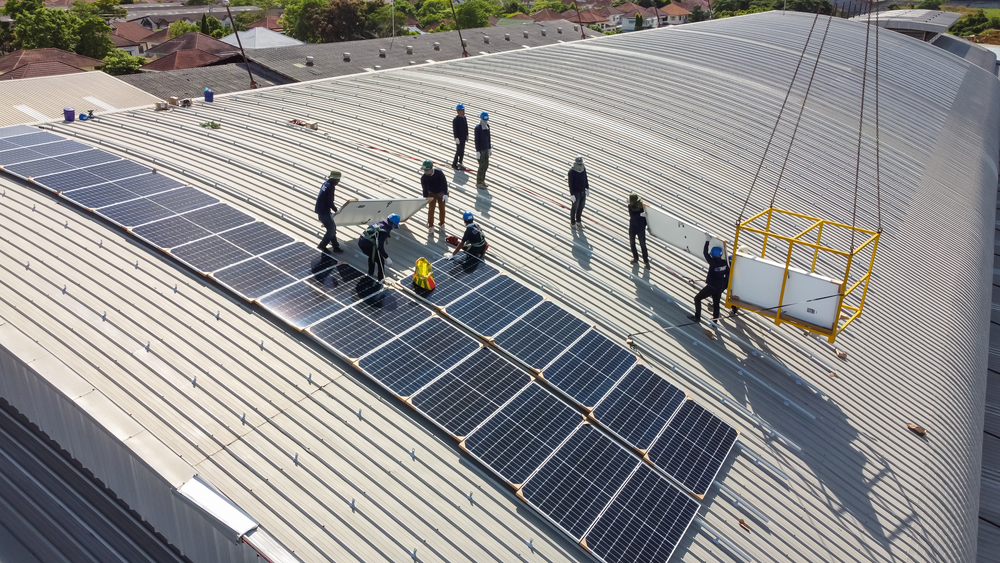Rationale for Adopting Solar Energy in the Ethanol Industry
As the ethanol industry grapples with the increasing pressure to reduce carbon emissions, renewable energy sources such as solar power are becoming more attractive. This article explores a compelling case study, highlights additional examples of ethanol plants leveraging solar power, and provides key factors to help plant owners and operators determine if solar is the right choice for their facility as more and more carbon intensity is the key to success and longevity.
Case Study: Chevron Renewable Energy Group
Chevron Renewable Energy Group, a large Iowa-based biodiesel producer, has initiated the construction of a solar array to provide electricity for its Mason City plant. As carbon emissions become a more pressing issue, Chevron REG is looking to renewable electricity sources to reduce the carbon intensity of its facility. Once the solar array is completed this November, it is projected to produce approximately 43% of the facility’s electricity requirements, significantly reducing its reliance on grid electricity. This switch will lower both the carbon intensity score (CI score) and operating expenses of the plant.
While your CI score may not have mattered much with just the federal RFS program and RINs, state LCFS programs, and now the 2022 Inflation Reduction Act and programs supporting Sustainable Aviation Fuel, have made a low CI score essential for ethanol plants. Mason City will benefit from the lower CI score and be able to sell its ethanol under LCFS programs for substantially more.
On-site Solar Installations Are Increasingly Cost-Effective and Easily Financed
Building on-site solar arrays connected to ethanol plants is a straightforward proposition with both readily-accessible financing and attractive financial returns. Typical rural solar power plants are developed by leasing nearby land, and installing “ground-mount” racking that supports the solar modules. The solar modules generate power in direct current, and on-site inverters transform the power to alternating current. The ethanol plant can consume all of the power at its own electric meter, or the project can be grid-interconnected via a small transformer or at existing substations near the ethanol plant. The ethanol plant can also purchase the renewable energy credits from the solar facility, thus reducing the ethanol plant’s CI score.
The Inflation Reduction Act expanded many tax credits, including the solar Investment Tax Credit (ITC) equal to at least 30% of the project’s costs for projects that meet prevailing wage guidelines. Some projects may also qualify for additional “bonus” credits, and all solar projects are eligible for depreciation deductions that often equal or even exceed the tax value of the ITC. Many ethanol plant owners or investors can monetize these tax credits and depreciation deduction, and the ethanol plant’s purchase of the solar power further reduces the investment risk. Solar facilities now have multiple cost-effective lending options, even in this higher interest rate environment, making many solar project cash-flow-positive from the first days of operation.
Other Examples of Ethanol Plants Using Solar Power
- Pacific Ethanol – Madera, California: Pacific Ethanol’s Madera facility installed a 5 megawatt (MW) solar array, which supplies a substantial portion of its electricity needs, reducing the plant’s overall carbon footprint and operational costs.
- Siouxland Energy Cooperative – Sioux Center, Iowa: Siouxland Energy Cooperative implemented a 1.7 MW solar power system, reducing its dependence on grid electricity, lowering its carbon intensity score, and improving its sustainability profile.
- Western Plains Energy – Oakley, Kansas: Western Plains Energy’s solar power system generates approximately 1.5 MW of electricity, reducing operational costs and enhancing environmental performance.
- Aemetis – Keyes, California: Aemetis adopted a solar power system that provides a significant portion of its electricity needs, lowering its carbon intensity score and benefiting from long-term energy cost savings.
- Absolute Energy – St. Ansgar, Iowa: Absolute Energy’s solar power system produces a considerable amount of electricity, contributing to reduced grid dependency and operational expenses.
Top 5 Factors to Determine if Adding Solar is Right for Your Ethanol Plant
- Energy Consumption and Costs: Evaluate your plant’s current energy consumption and costs. High energy consumption with significant expenses might make solar power a more attractive option due to the potential for substantial savings. Also consider the source of the electricity for your plant. Plants that are powered by coal fired electricity would benefit the most from adding solar, but even natural gas fired electricity would benefit from the lower CI of adding solar power. Your existing life cycle carbon analysis should be reviewed to determine the impact of your electricity production on your CI score.
- Available Incentives and Financial Benefits: Research various available financial incentives, such as the Investment Tax Credit (ITC), USDA’s Rural Energy for America Program (REAP), and state or local incentives. These can significantly reduce the upfront costs of solar projects and enhance the financial viability of such investments.
- Site Suitability: Assess the suitability of your site for solar installation. Consider space availability, sunlight exposure, and structural considerations to ensure the feasibility of a solar project.
- Financial Health and Investment Capacity: Examine your plant’s financial health and capacity for investment. Ensure your plant has the financial resources to invest in a solar project, considering the return on investment (ROI) period and long-term financial benefits. For the ITC, consider tax appetite of the plant or even its members to provide the ITC investment. Otherwise, there are many ITC tax investors that may be interested.
- Operational and Maintenance Considerations: Understand the operational and maintenance requirements of a solar power system. Ensure your plant can manage these responsibilities or consider contracting with an external service provider.
Other Renewable Energy Options
Ethanol plant owners and operators have other options for reducing their CI score as well, including renewable natural gas (RNG) or off-grid wind. RNG can be produced from dairy manure, food waste, waste water, landfill gas, and even from corn stillage after ethanol production. The RNG can be used to fire on-site natural gas boilers or even power gas powered generators to produce electricity. Off-grid wind can be used like solar power to replace grid-based electricity and provide the same benefits for CI score reduction.
Strategic Steps for Integrating Solar Energy in Ethanol Plants
The move towards renewable energy sources like solar power is not just environmentally responsible but also economically advantageous. By reducing carbon intensity scores, operational expenses, and taking advantage of financial incentives, ethanol plants can significantly benefit from integrating renewable energy projects into their energy mix. Chevron REG’s initiative in Mason City serves as a compelling case study for the potential gains in sustainability and cost savings that can be achieved.
For owners and operators of ethanol plants, now is the time to explore the opportunities presented by solar energy. With the right support and strategic planning, these projects can drive substantial improvements in both environmental impact and bottom-line performance. If you need further assistance in evaluating these factors and navigating the process, Avisen Legal is here to help you every step of the way.









